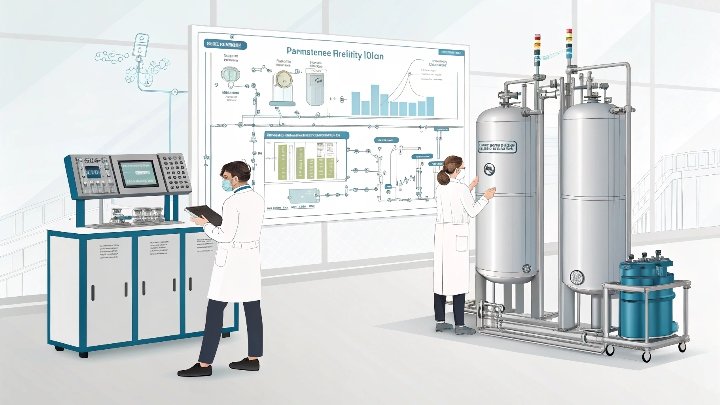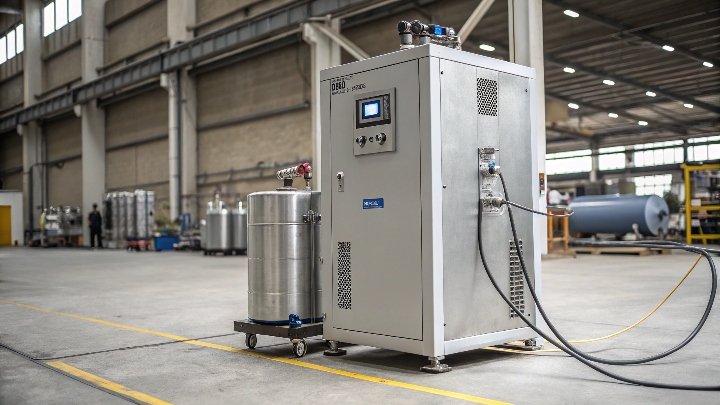Is your oxygen concentrator showing a drop in oxygen levels? It’s easy to point the finger at the molecular sieve. But, is it truly the culprit?
Molecular sieves don’t always cause a drop in oxygen concentration. While they play a key role in gas separation, many factors such as air intake, compressed air pressure, and filter condition can impact performance.
Before blaming the molecular sieve, it’s important to rule out other potential issues that might be affecting your oxygen system. Let’s explore some of the main factors involved in oxygen concentration fluctuations.
Molecular Sieves: The Oxygen "Thief" or Innocent Bystander?
It’s tempting to blame the molecular sieve when oxygen levels start dropping. After all, it’s the component designed to separate gases. But, could it really be stealing oxygen?
Molecular sieves, specifically oxygen concentrators, don’t inherently lower oxygen concentrations. However, their effectiveness is influenced by several system factors that could contribute to reduced oxygen output.
The role of molecular sieves in oxygen concentrators is critical. These sieves are designed to selectively adsorb nitrogen and other gases, allowing the oxygen to pass through. However, several factors can impact how efficiently they work. First, the air intake plays a major role in the sieves' performance. Too much or too little air entering the system will directly affect their capacity to separate gases. The molecular sieve works best when air is filtered and compressed correctly. Variations in the pressure of compressed air can alter how well the sieve adsorbs gases, influencing the oxygen concentration output.
Another critical factor is the internal filters of the concentrator. Filters are designed to remove impurities from the air before it passes through the sieve. If the filter is clogged or in poor condition, it will affect the overall function of the system, leading to a reduction in oxygen concentration. Therefore, regular maintenance of these filters is crucial for ensuring optimal performance.
Finally, molecular sieves have a limited lifespan. Over time, their ability to separate gases diminishes, especially if they are exposed to moisture or contaminants. In this case, replacing the sieve could resolve the problem. If daily maintenance checks have been conducted and no other issues are found, it might be time to replace the sieve to restore normal operation.
The Double-Edged Sword: When Sieves Boost or Deplete Oxygen!
Are you experiencing inconsistent oxygen levels? Your molecular sieve might not be the problem, but it could be amplifying an existing issue in the system.
The molecular sieve can either boost or deplete oxygen levels, depending on external factors such as air pressure, intake volume, and filter health. It’s a complex balance of variables that can affect performance.
Molecular sieves are designed to boost oxygen levels by separating nitrogen and other gases from the air, allowing for concentrated oxygen to flow through. However, their performance is closely linked to how well the entire oxygen system is maintained. If the compressed air pressure is too high or too low, the molecular sieve’s ability to function properly is compromised. A high pressure can lead to a quicker saturation of the sieve, while a low pressure can reduce the sieve’s efficiency, leaving more nitrogen in the mix.
Another factor is the size and volume of the air intake. If the intake is restricted or not optimized for the concentrator’s capacity, the molecular sieve may not receive enough air to work at full efficiency. This would result in a lower oxygen output despite the sieve being in good condition. On the other hand, an oversized intake could overwhelm the sieve, causing it to saturate too quickly, reducing the concentration of oxygen as the system struggles to keep up.
The health of the internal filter is just as important. If filters are clogged, they not only reduce airflow but also increase the likelihood of contaminants entering the molecular sieve, which can cause poisoning or premature failure. If the sieve becomes contaminated, it may fail to separate gases effectively, leading to a drop in oxygen concentration. Regular filter replacements and proper air intake management can ensure that the molecular sieve works at peak performance.
Beyond the Hype: Separating Fact from Fiction in Gas Adsorption!
There's a lot of misinformation surrounding molecular sieves, especially when it comes to their role in oxygen concentrators. Let’s uncover the facts and debunk the myths!
Molecular sieves are often misunderstood. While they are essential for gas separation, their performance can be affected by several factors beyond just their material properties. Let’s break down some common misconceptions.
A common myth about molecular sieves is that they will inevitably reduce oxygen concentrations over time. In reality, this is not the case. Molecular sieves have a finite lifespan, but they don’t always need to be replaced unless they are damaged, contaminated, or have lost their adsorption capacity. The key to maintaining effective performance is proper maintenance and ensuring that the system as a whole is functioning correctly.
One misconception is that a molecular sieve's efficiency is purely determined by its size or material. While these factors do play a role, the real performance drivers are air pressure, intake volume, and filter health. For instance, even a high-quality molecular sieve will perform poorly if the compressed air pressure fluctuates too much. Similarly, an improperly sized intake or a poorly maintained filter can cause inefficiency, regardless of how good the sieve itself is.
Molecular sieve failure is often blamed on the sieve itself, but in many cases, the root cause lies within the entire system’s maintenance and operation. If you’re experiencing a drop in oxygen concentration, it’s worth checking all system components, not just the sieve. Regular maintenance checks and timely replacements of filters and other components are crucial to prevent the system from deteriorating. If you find that all components are in working order and the problem persists, replacing the molecular sieve may be the final step to restoring normal function.
Conclusion
Molecular sieves don’t directly lower oxygen concentrations, but their performance can be impacted by air intake, pressure, and filter condition. Regular maintenance is essential to keeping your system working at its best.






